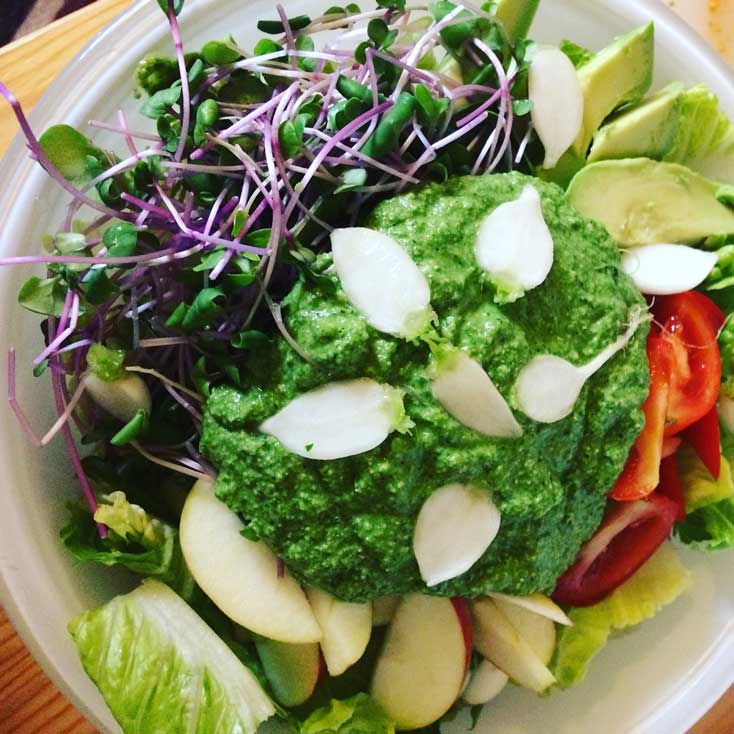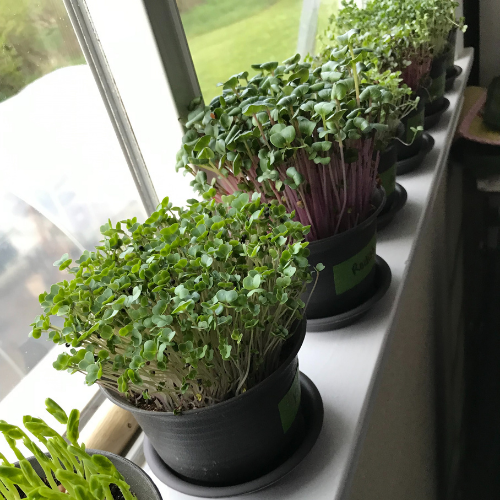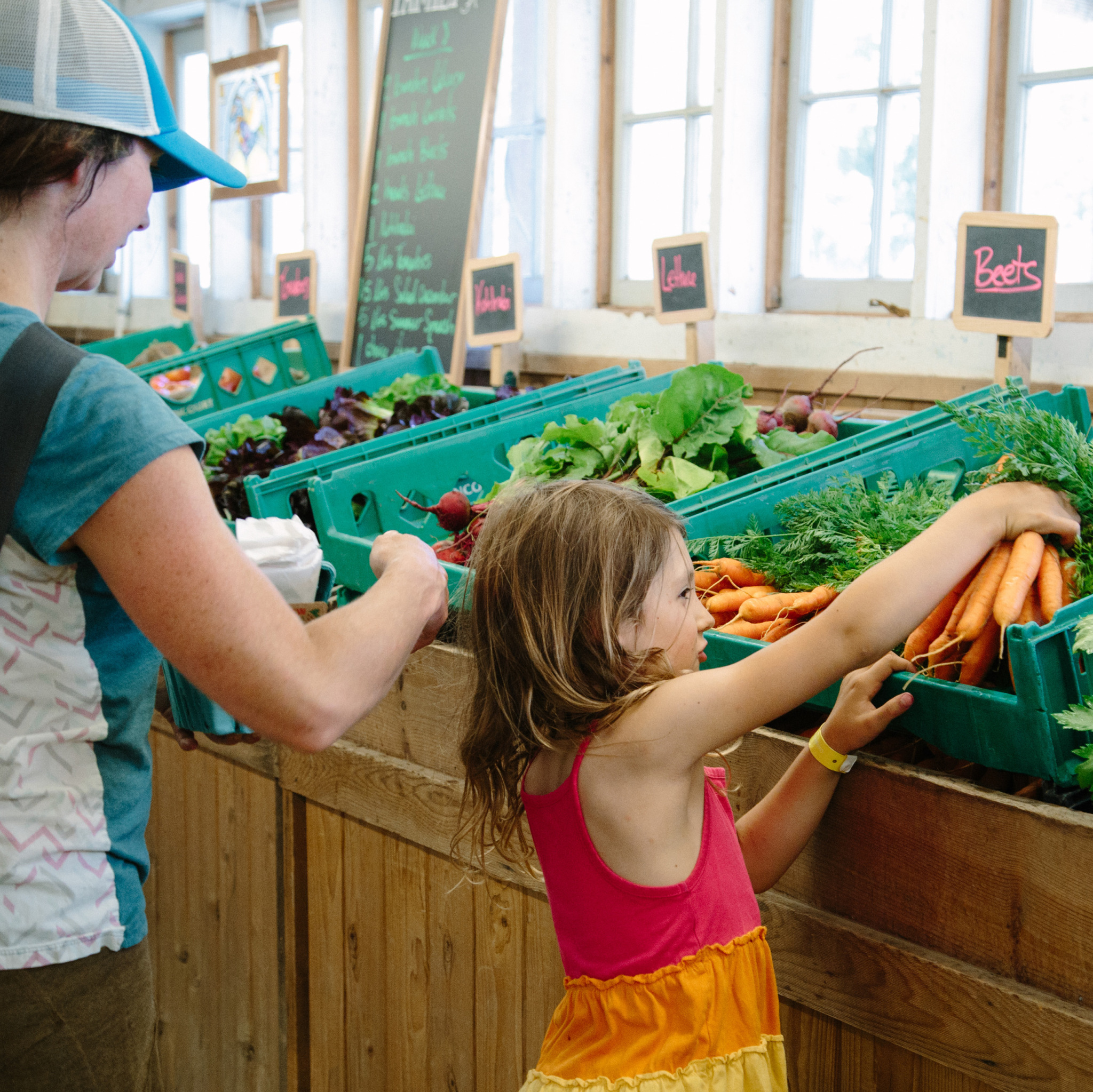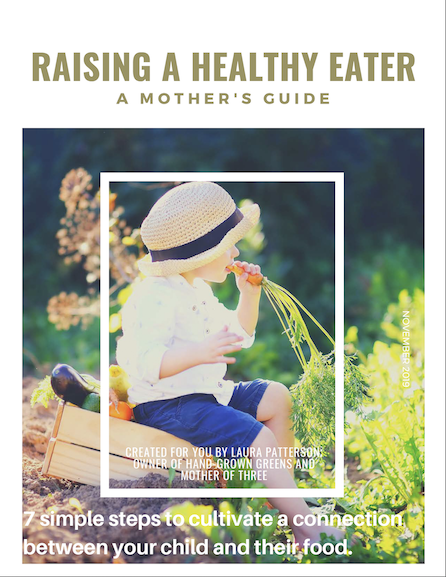Let’s agree that we can’t expect our kids to understand where their food comes from unless they really see, and better yet, participate in the process of growing and raising food.
We all want to lay a healthy foundation for our kids right? We want them to appreciate food, have an understanding of where food comes from and a desire to eat healthy, whole foods. I want to give you some practical, actionable steps you can take to minimize pickiness and cultivate gratitude when it comes to food. This all starts with learning where food actually comes from.
7 actionable steps you can take to raise a healthy eater
How to instill healthy eating habits by creating a healthy relationship between your kids and their food.
1. Model healthy eating
Start by taking an honest look at yourself and your diet. Our kids are extremely observant. If we are not making healthy food choices ourselves, our kids will have a much harder time reconciling our words and our actions. So this is an important one! If you know you need to make some changes, stop making excuses and just do it. You deserve healthy food as much as your kids!

2. Use Positive Table Talk
Frame table talk in the positive. Avoid threats or rewards around eating vegetables or other healthy foods. As parents, many of us have resorted to the “if your don’t eat your vegetables, you won’t get a treat” or other such threats. Sound at all familiar? This is not a guilt trip. We’ve all gone to some sort of embarrassing length at some point in time trying to get healthy food into our kids .
The problem is these kind of threats or rewards frame healthy foods (like vegetables) in a negative light. In the minds of our kids, healthy food becomes something that must be choked down for reward. I want more for my kids and I’m sure you do too. I want to instill a love for healthy foods!
If you are with me on this, it is really important to be intentional about eliminating any kind of table talk that frames healthy food as an obstacle to “the good stuff”. Heathy food IS the good stuff! Am I right?!? Lets not send our kids any other message than that!

3. Practice Gratitude for Healthy Food
Help your kids start to build the connection between healthy foods and healthy bodies. This can be as simple as remarking how grateful you are that your healthy lunch has given you the energy you need to enjoy playing soccer. Take a moment to reflect on activities that bring your own kids joy.
Then think of how you can draw the connection between this activity and healthy food. Healthy foods give us clear thinking, energy to play, protection from getting sick etc. Practicing gratitude will help your kids develop a strong foundation for a healthy relationship with food.
4. Visit a farm near you
Most kids universally love farms. Visiting a local farm is a fun way to help kids really start to understand the most basic fundamentals of food production. Kids need these core perspectives to develop a healthy relationship with their food as they mature. Lay the ground work now! Look into Community Supported Agriculture Programs (CSA) in your area. CSA’s provides an amazing opportunity to connect with local food.
Less than 1% of kids in the U.S. today grow up on farms. So, if you don't acres of land to cultivate, don't worry. You are not alone.
This just means you have to be a little more intentional about teaching your kids the basics about where food comes from.

Photo by Jubilee Farm
5. Shop at a Farmers’s Market
Farmer’s Markets are another way you can expose kids to healthy, locally raised and grown foods. Market environments tend to have a festive energy about them which sends the message to our kids that healthy food is something to be celebrated, rather than endured.
6. Grow Your Own Food at Home
If you have the time and resources consider planting a garden in your yard. This can be as elaborate or as simple as you have time and space for. If you are new to gardening I recommend starting small. Pick vegetables, fruits and herbs that do well in your climate and that are enjoyed by your family. Consider raising chickens or other small livestock if your are able. For younger kids not so well versed in delayed gratification, you may reap even more benefits from growing Microgreens in windowsill pots right in your home.
Microgreens are extremely nutritious, and simple to grow year round right in your house!
Whats more, they grow extremely quickly. Even the most impatient little ones will enjoy growing these mini plants as they change daily and can be ready to eat in as little as 7 days. As a mother of 3 small children, I have found growing microgreens at home to be the most engaging activity that gets my kids excited about growing and eating healthy food! Let your kids decide what they want to grow and really let them do it with their own hands. The power of ownership will transfer when it comes time to eat these nutrient dense little greens.
7. Involve your kids in meal prep
Let your kids help with meal planning and preparation. Planing and preparing meals helps kids feel empowered. Kids are much more willing to follow through on choices they have made themselves. Get creative here. Meet your kids where they are at developmentally. I believe even very young kids can be involved in meal preparation in some way. If your kids have been involved in growing Microgreens or other vegetables, give them the reins as much as possible with these ingredients.

Start implementing these steps today
Help your kids develop a true love for healthy food that will be with them for life!

